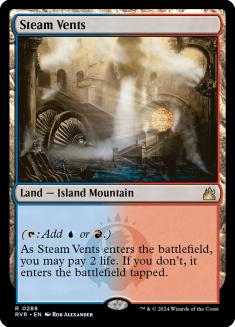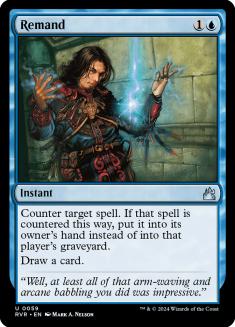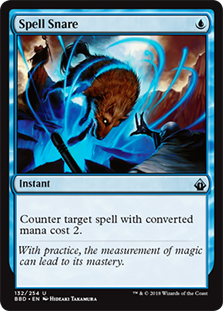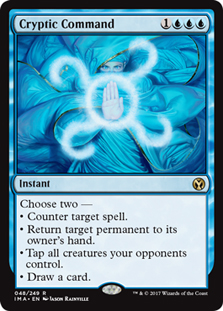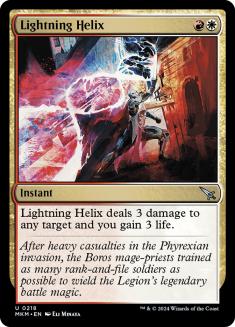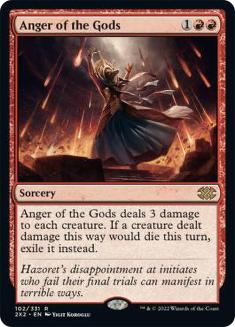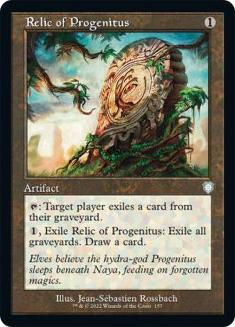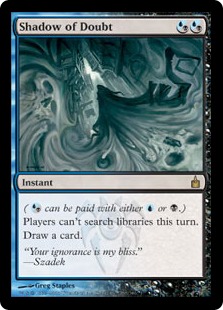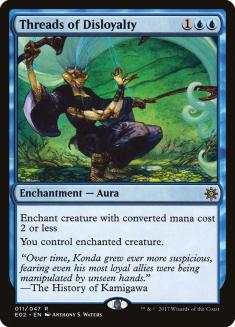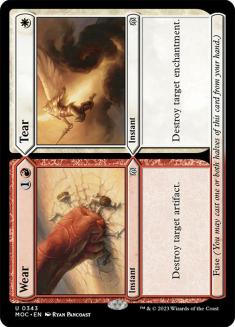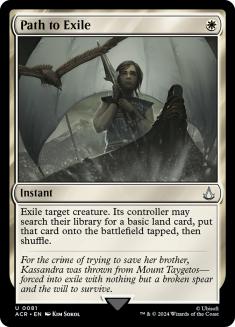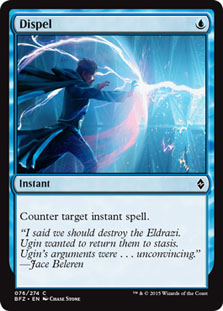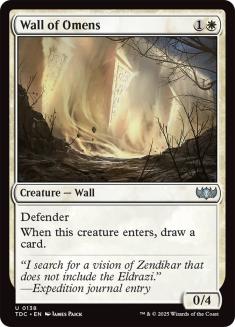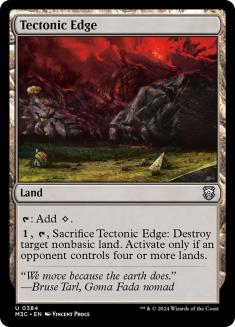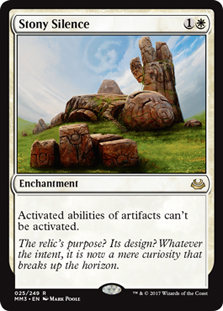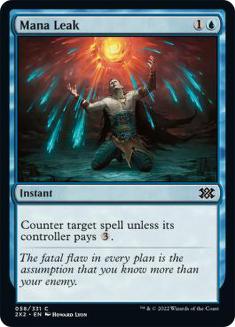The World Championship.
Pretty. Big. Deal.
That’s without even mentioning the World Magic Cup, which I would also have to say is a pretty big deal, but that’ll have to be a story for another day. In
fact, my experience at the World Championship will have to be a story for another day since, as I’m writing this, it still hasn’t happened yet.
This isn’t the greatest tournament report in the world, this is just a prelude.
The Metagame
With such a small field of 24 competitors, in theory, it should be easier to predict what everyone is going to play, with greater rewards for doing so.
Guessing incorrectly could mean instant doom. My predictions for the field are that there will be more control, more combo, and less aggro than most
tournaments.
There is a reason most people have preferences for certain styles: because they do better playing them. Many of the players invited to Worlds have a
preference for combo and control, which are both viable in Standard and Modern.
Anything can happen though. Everyone will be looking to get a leg up on the competition, which means that they can bring decks to beat the expected decks,
or decks that beat those, or decks that beat those decks, and so on forever. Add that in with all of the formats being very deep and diverse,
plenty of differing opinions on what actually beats what, and there not being too many ridiculously lopsided matchups in Constructed, and it means
metagaming has a little less weight than it may have in past formats. I think that, as has been the trend of late, picking solid decks and being able to
pilot them will be the most important factor, rather than finding the format-breaker.
Vintage Masters Draft
When I learned that Vintage Masters Draft was going to be a format at Worlds I decided I wanted to try and do 100 Vintage Masters drafts. Unfortunately, it
wasn’t available online for the entire period beforehand so I only managed to do 30+ drafts. I just wanted to know I had put in the most preparation I
possibly could for such an important tournament, and usually quantity translates into quality when it comes to Magic.
There are plenty of strategies like Storm, Goblins, or Astral Slide/Lightning Rift decks that can work if the right cards are opened and no one else is
drafting them. I prefer to stay open when drafting, but it could makes sense to go “all-in” on a strategy like drafting Storm, since Vintage Masters
actually supports many focused strategies. That said, you can expect other players to sniff out the most powerful draft archetypes and I even expect there
to be a decent number of people looking to draft a specific strategy. This leads me to wanting to do the safe thing and stay open and draft what comes. I
actually don’t have much preference color-wise, but prefer to be drafting slower green, blue, and black decks. While I’m happy to draft white or red, which
are probably the two best colors and can end up very powerful if open, I’d prefer to draft what’s coming, which usually isn’t the aggressive weenie decks.
Also, it would be fun to draft a piece of power in real life.
Khans of Tarkir Draft
Not too much to report here. Khans Draft is great. It’s big, diverse, and challenging. Oddly enough, I really don’t have specific color preferences here
either, and I’m happy to stay open and draft what’s coming. This means I tend to stay away from the defined archetypes like B/W Warriors or Five-Color and
leave those decks to the people who really want to draft them. There are many differing opinions about drafting Khans, but the relevant parts are to know
the cards, play tight, tempo and curve are important, and draft a bunch of times.
Standard
Constructed. Standard and Modern. One might assume that I would be very heavily incentivized to run my fall back of good ol’ red, white, and blue in both
formats. I just finished first and second at a freakin’ Pro Tour in Modern and Standard within the last year running the colors. Maybe I watched the theme song of America’s Funniest Home Videos one too many times as a kid. I’m a Jeskai kinda
guy and it’s been working for me lately. There’s gotta be a reason why it was dubbed “Jeskai Wins” at one point (and probably not because it was a good
name).
The thing is that early on I wasn’t interested in Jeskai strategies for either format. I felt like Standard is too hostile, and the deck is missing a few
tools it would need to be able to compete. Siege Rhino and Courser of Kruphix are an absolute beating. Jeskai decks are still great when you have Goblin
Rabblemaster or Mantis Rider on the play, but beyond that, they felt a little too weak.
Sigh.
While it might not be my ideal archetype, here’s what I decided on:
Creatures (12)
Planeswalkers (6)
Lands (25)
Spells (17)

I actually really enjoy playing Abzan Midrange. It has card draw, it has lifegain, it has planeswalkers. I looked into pretty much every deck in the
format, and while most decks performed pretty well, I couldn’t quite find a good enough reason to not be running Siege Rhinos. U/B Control was a top
contender in my testing, but at a certain point I just felt like I’d rather be on the Abzan side of the matchup and that U/B Control was just a bit too
clunky in too many areas.
I love the Temples and tend to favor running more tapped lands than other lists. I can’t resist having such great card selection and mana even if it means
risking being too slow. Nissa, Worldwaker is very solid against decks looking to trade one-for-one, and matches up pretty well against other planeswalkers
and midrange or control decks. Read the Bones just enables you to slowly grind through your deck and gain any card advantage you can while you throw
removal spells at your opponent.
Abzan has some of the best sideboard options in the format. Postboard it is likely to be favored against most decks. This is particularly relevant since
the Top 4 is Standard, and the matches are best of five. It is also unlikely, but a relevant consideration that the Standard rounds are played last in the
swiss, so it’s possible to be undefeated or have a very good record going into them, which means not having to play many crucial best of three matches
before the Top 4 where I’ll get to play more sideboarded games.
The chances of Abzan being a bad choice are low, but if this deck fails it will probably be because I played things a bit too safe. I tried to make my
Abzan list a bit more resistant against control and Whip of Erebos decks without sacrificing too much elsewhere. Abzan is very average though; on a good
day it will do good, on a bad day it will do bad.
Much has already been said about Abzan Midrange, and my list isn’t anything particularly special, so let’s move along to the main course: my Modern deck.
Modern
The addition of Treasure Cruise, Dig Through Time, and Jeskai Ascendancy threw me off at first. Like many people, I initially thought the format would be
busted beyond repair as long as they were in the format. I thought that meant we would all be playing Super Saiyan Magic where we hurled ultra powered
combo attacks at each other from across the battlefield until one person was left a smoking crater on turn 2 or 3.
Seeing the results of Birthing Pod and Abzan decks making an appearance, as well as the decreasing popularity in U/R Delver and Jeskai Ascendancy Combo
after their initial showings, made it clear that the format wasn’t completely broken. It appeared I would need to shift my view on Modern a few degrees
rather than pull a complete 180.
At first I thought any sort of Jeskai deck would be strictly inferior to U/R Delver. Over time I learned that blue decks didn’t need to be focused on just
filling up the graveyard as quickly as possible and casting Treasure Cruise. It turns out Dig Through Time can be supported by just casting good spells.
Soon I had cooked up another Jeskai deck I was happy with. Each evolution on the deck is a joy to bring to life. This isn’t even my final form:
Creatures (7)
Lands (26)
Spells (27)

Mmmmmm. I just really enjoy casting all of these cards. It might look a little funky but every card has been hand-picked with love.
Dig Through Time is just too powerful not to play in this strategy. It closes out the game by chaining into more of itself and, as you might expect, the
graveyard fills up quickly if you’re casting spells and cracking fetchlands.
Electrolyze is still amazing. I’m not sure I’ve ever sided it out. 3 Lightning Bolt and 2 Lightning Helix is an interesting decision. Lightning Bolt is
still good, but I feel it’s gotten a little worse in this format. There are fewer Dark Confidants and fewer ways to search out a Mountain on turn 1 thanks
to Flooded Strand. Lifegain on the other hand can be essential and with Dig Through Time, any sort of silver bullet or unique effect is incredibly
valuable. That also helps explain the single copy of Supreme Verdict.
The Wall of Omens and Restoration Angel engine is great but a little too slow and a little too messy with Dig Through Time to go for more of them. Shadow
of Doubt is great against Pod and Scapeshift and a great surprise one-of. Celestial Colonnade serves at the very end game after you’ve started digging, or
just as a utility blocker to buy time if you’re flooded.
The deck is just jam packed with card advantage. It wants to grind the opponent to nothing and then finish them with a grip full of cards.
As for the sideboard, Mana Leak and Remand get better on the play, while Lightning Bolt gets better on the draw, so keep that in mind when adjusting
between games. This sideboarding assumes you’re on the play.
VS Birthing Pod
Out:
In:
This assumes they have Choke, which makes Wear//Tear worth it, and shaving the blue spells and Islands is helpful as well. Deal with their Birthing Pod and
their graveyard recursion and they become
a deck with mediocre creatures.
VS Scapeshift
Out:
In:
Scapeshift uses Dig Through Time better than we do. This matchup is very tricky since one misstep can mean you’re dead. Path to Exile stays in under the
assumption that they bring in Obstinate Baloth (don’t forget to Path your own Wall of Omens if you need a land). Try to gain any value you can early and
keep their land count low or they will be able to wiggle through your disruption.
VS Abzan
Out:
In:
This matchup is about getting as much value as you can. Fulminator Mage can steal wins, as can an unchecked Liliana of the Veil, so you want to counter
them pretty badly. If you don’t get buried early, the lategame should favor you.
VS Affinity
Out:
In:
Affinity is still always a scary matchup, but you have all the tools to beat them as long as they don’t vomit out perfect starts. Keep in mind Affinity is
decent at playing the midgame with gigantic threats like Ensoul Artifact, Etched Champion, and Master of Etherium.
VS U/R Delver
Out:
In:
They are capable of vastly outdrawing you in the short game with Treasure Cruise and cheap disruption, but your cards have much more substance, and if you
can put up a good defense, they will flood out and fizzle.
The Calm Before The Storm
Being able to compete in World Championship is a dream come true. I used to watch high level Magic and imagine being a part of it, now I am.
The problem being part of a dream come true is you don’t dream about the stress, and competing at the highest levels is stressful. When you’re imagining
something you tend to just imagine reaping the rewards and not the work it takes to get it, or what difficulties you might face. There’s also more
pressure, more eyes on you, and more to lose when you make mistakes. Even during testing there is almost always a period of “Oh crap, oh crap, my decks
suck and I suck!” It’s inevitable that you lose a few games and start thinking about the worst things that can happen.
All in all though, a little bit of added pressure is a pretty small price for being a Magic Pro.
Acceptance that things can, and sometimes will, go wrong is a huge help. At a certain point you need to let go of trying to attain perfection and then
start to see actual ways to win the event, and look at what can go right instead of things that can go wrong. You can be realistic about your expectations
while still being confident.
I will relax, breathe, and do my best. So what if I fail? Even being in a position to do poorly at the World Championship of anything is awesome. The
better you are, the bigger and more spectacular your fails will be, and the more you fail, the better you get. (You get better the more you win as well,
it’s just failing has fewer other things going for it.) When you approach things this way, there’s no such thing as losing.
The truth is there are 24 great players competing and only a handful will do well. Only one will win. While winning is the goal, it isn’t realistic, and it
would be foolish to tie my sense of happiness to only my results.
I am happy with my preparation. I know my decks have the potential to do very well and that I have the potential to do very well. This is not a guarantee
of success, I could still 0-14. But winning isn’t my only focus. I’m going to try to be relaxed and have fun, win or lose. This isn’t always possible, but
I think it’s an important goal to have.
By the time this gets posted, the swiss rounds will be done. I will either be in the Top 4 or not. That’s where all the stress and excitement comes from,
imagining that future.
While I’ll try not to dwell on the future too much, I have learned to leave a little extra space while I’m packing my bags, just in case things go
spectacularly right and I end up winning a little extra luggage to bring home on my return trip.

